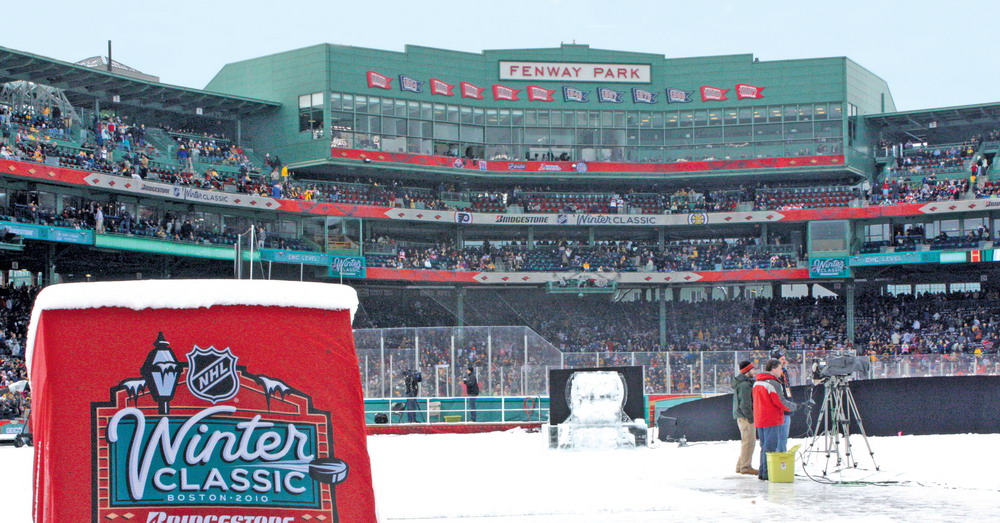From medieval times, when warring clans used animal blood and vegetable dyes to decorate flags before heading into battle, banners have served as a visual-communication staple. They’ve perpetually loomed as a cornerstone for signshops that emphasize vinyl fabrication. According to the 2009 Commercial State of the Industry Report (see ST, August 2010, page 62), 92.8% of shops that produce non-electric signs fabricate banners, and banners represent 19.9% of all commercial sign sales (among high-volume shops that gross more than $500,000 of sales annually, that percentage grows to 23.8%). Ever-improving materials, inks, RIPs and color profiles have enabled providers to deliver more vivid, crisp prints that can be installed in more varied environments.
Sure, there will always be a market for 4 x 8-ft. “Sale Today” or “Grand Opening” banners designed with black, Helvetica letters. Such a job’s price point is simply what fits some customers’ modest bottom lines. However, some customers thankfully take the maxim, “A business with no sign is a sign of no business,” to a higher level with dynamic, soft-sided signage – often well integrated with broader environmental-graphic programs that feature signage, wayfinding and other signage elements.
Flying Colors (Berkeley, CA) fabricated banners, wallcovers and other types of site signage for the 2010 Bridgestone NHL Winter Classic, which pitted the Philadelphia Flyers against the Boston Bruins in Fenway Park on New Year’s Day. This was the third consecutive year Flying Colors has produced environmental graphics for this Winter Classic (the shop has also produced graphics for the NFL’s Pro Bowl for more than 20 years, as well as for several Super Bowls).
David Kerchman, the company’s president, said the program differed from last year’s Wrigley edition on several levels. First, rather than Wrigley’s outfield ivy, a rendering of Fenway’s left-field “Green Monster” loomed prominently among the banner program’s components. Also, although the park is nearly as aged as Wrigley, it facilities permitted easier maneuvering of the banners and wallcoverings through the facility (all told, Flying Colors produced 45,000 sq. ft. of graphics).
However, this job encountered similar, blustery climate. Kerchman said, “Weather and climate pose significant factors in choosing the material and installing it. Exposure to wind, rain, snow and other harsh elements requires a more durable substrate, such as flexible-face material, vinyl or a mesh product. In contrast, for areas where aesthetics are more important than durability, we would consider a polyester or fabric media.”
The project required 200 to 300 individual pieces, which includes banners, wall and building wraps, billboard and other, vinyl-graphic installations. Although Fenway’s architecture resembles Wrigley’s, Kerchman said the scope somewhat varied due to such unique amenities as the five billboards outside the facility and more exterior-banner capacity.
Advertisement
Of course, a project of such large scope required diverse media solutions. Flat concourse walls received 3M Controltac with Comply air-release media, and, depending on the banner’s location and visibility, tensioned structures were outfitted with 13-oz., flexible-face vinyl. Other soft-sided signs were fabricated with a mixture of perforated polyester, knit polyester and vinyl mesh.
To print textile components, Flying Colors used its 64-in.-wide Mimaki DS 1600 dye-sublimation printer Wasatch’s SoftRIP and Manoukian Dual inks. For environmental graphics that incorporate vinyl, the shop used its EFI-VUTEk 3360 solvent-ink printer.
Prior to hanging the banners, Flying Colors installed a rigging apparatus. Hardware depends on the banner’s particular location; cable ties, Velcro® and turnbuckles, among other solutions, were used.
“Ordinarily, we don’t use laminates for such short-term installations,” Kerchman said. “But, in this type of environment, vinyl can become extremely brittle, so we laminated them with a luster-finish overlaminate and coated them with premask prior to installation to provide extra heft.”
He continued, “It’s rare for a project of the magnitude to proceed seamlessly. Design or installation decisions often become delayed; sponsorships change at the last minute, and Mother Nature heavily influences wintertime installations. But, we’ve learned to be prepared for the unexpected.”
Preparations are already underway for the 2011 Winter Classic, which will pair the Pittsburgh Penguins and Washington Capitals at Pittsburgh’s Heinz Field.



 Tip Sheet2 weeks ago
Tip Sheet2 weeks ago
 Photo Gallery3 days ago
Photo Gallery3 days ago
 Ask Signs of the Times5 days ago
Ask Signs of the Times5 days ago
 Real Deal2 weeks ago
Real Deal2 weeks ago
 Paula Fargo20 hours ago
Paula Fargo20 hours ago
 Benchmarks1 week ago
Benchmarks1 week ago
 Photo Gallery20 hours ago
Photo Gallery20 hours ago
 Women in Signs2 weeks ago
Women in Signs2 weeks ago







